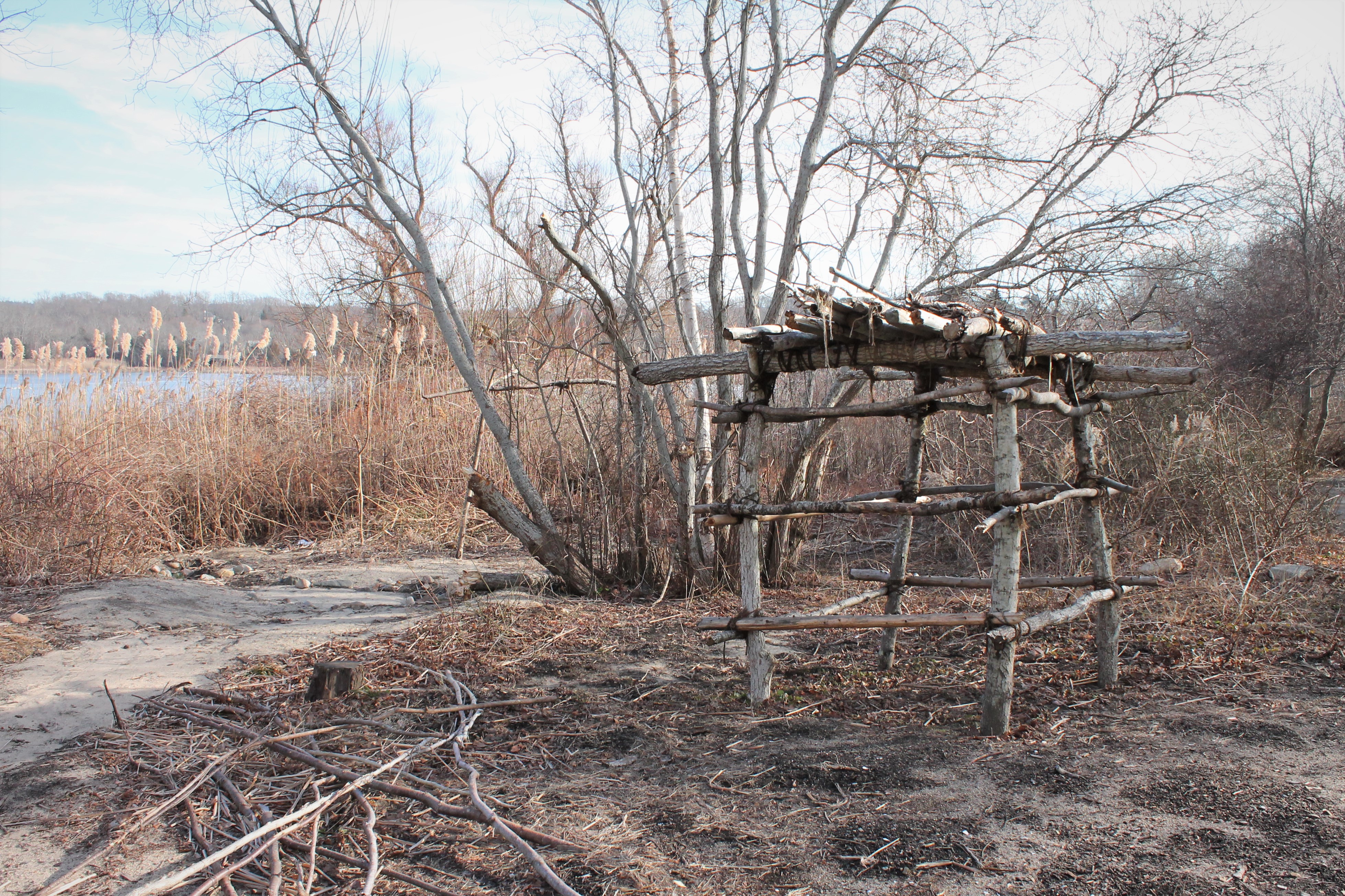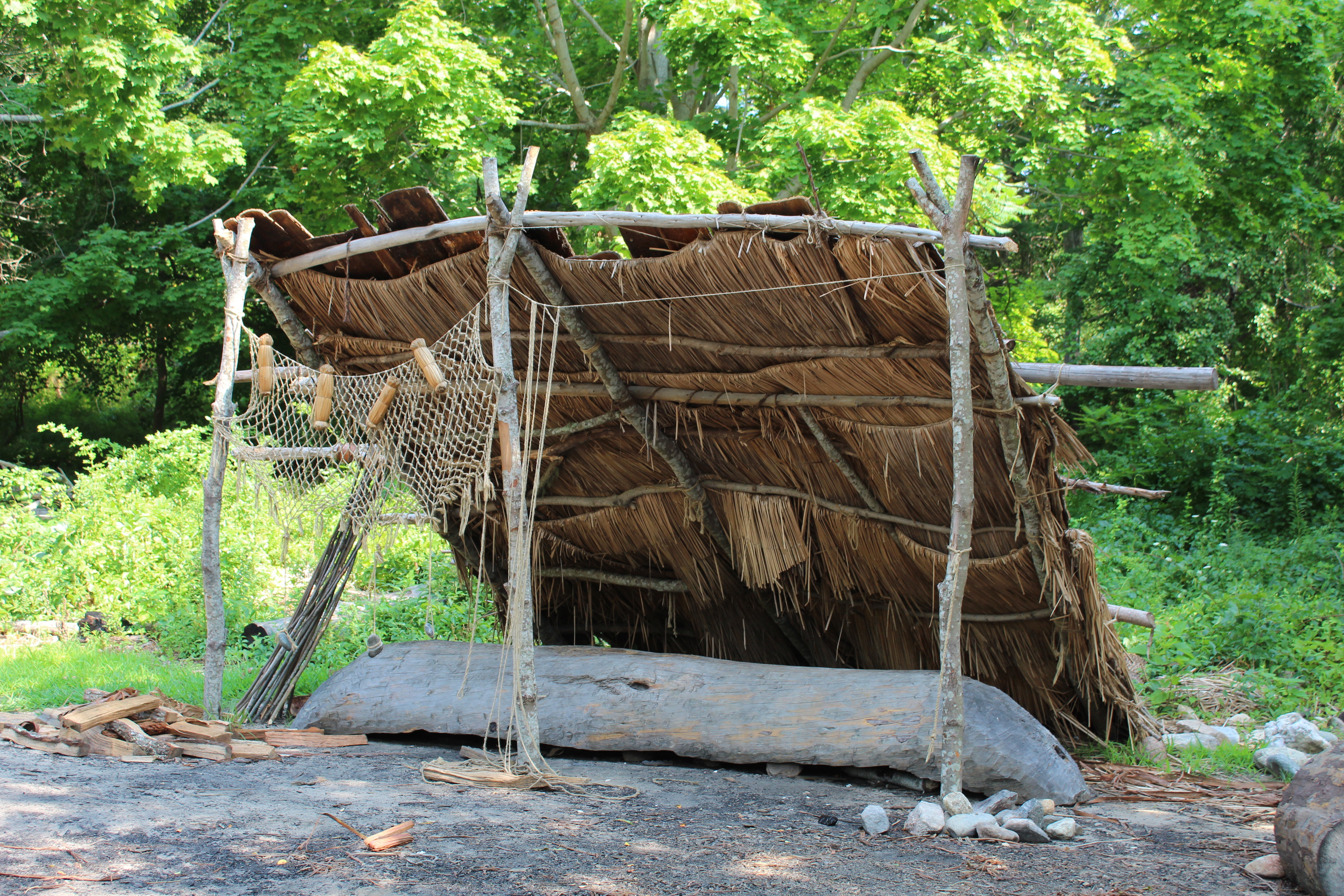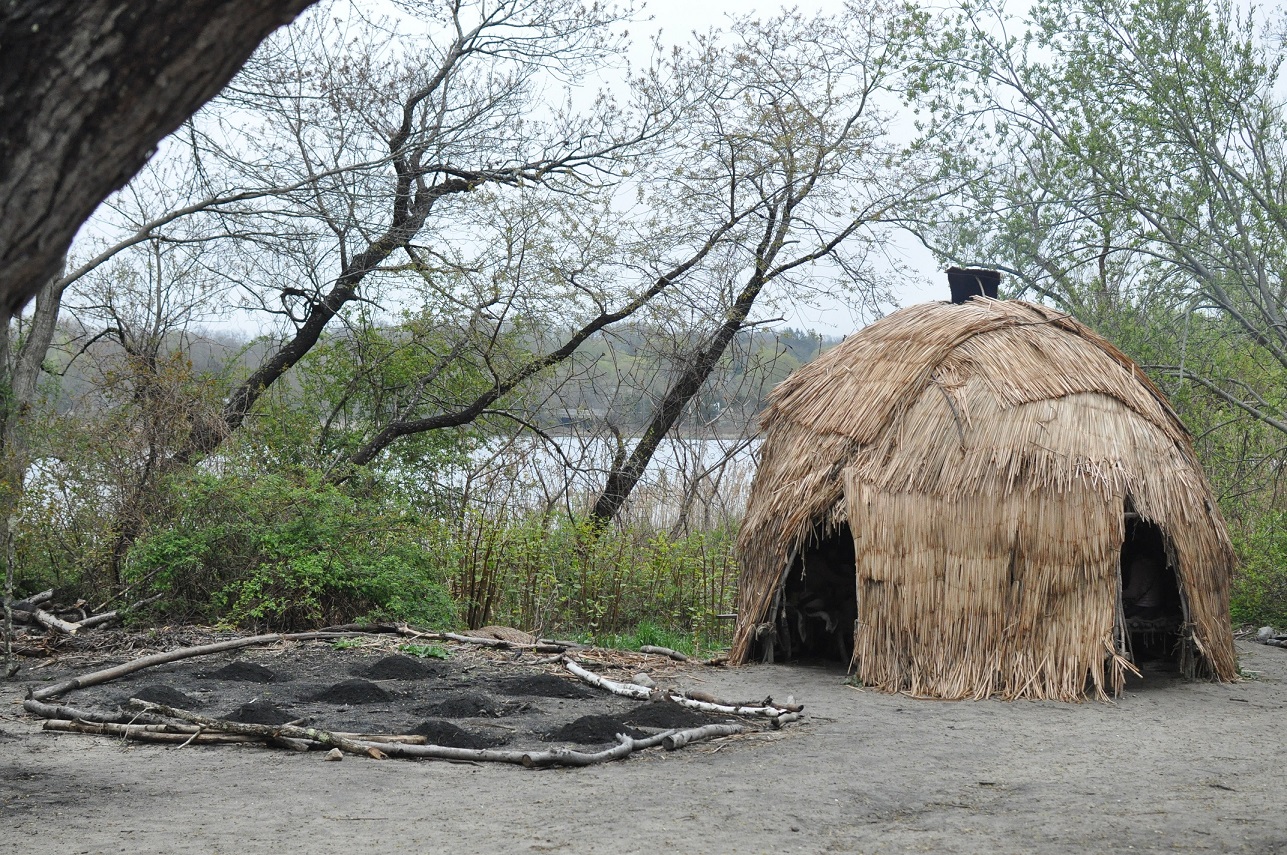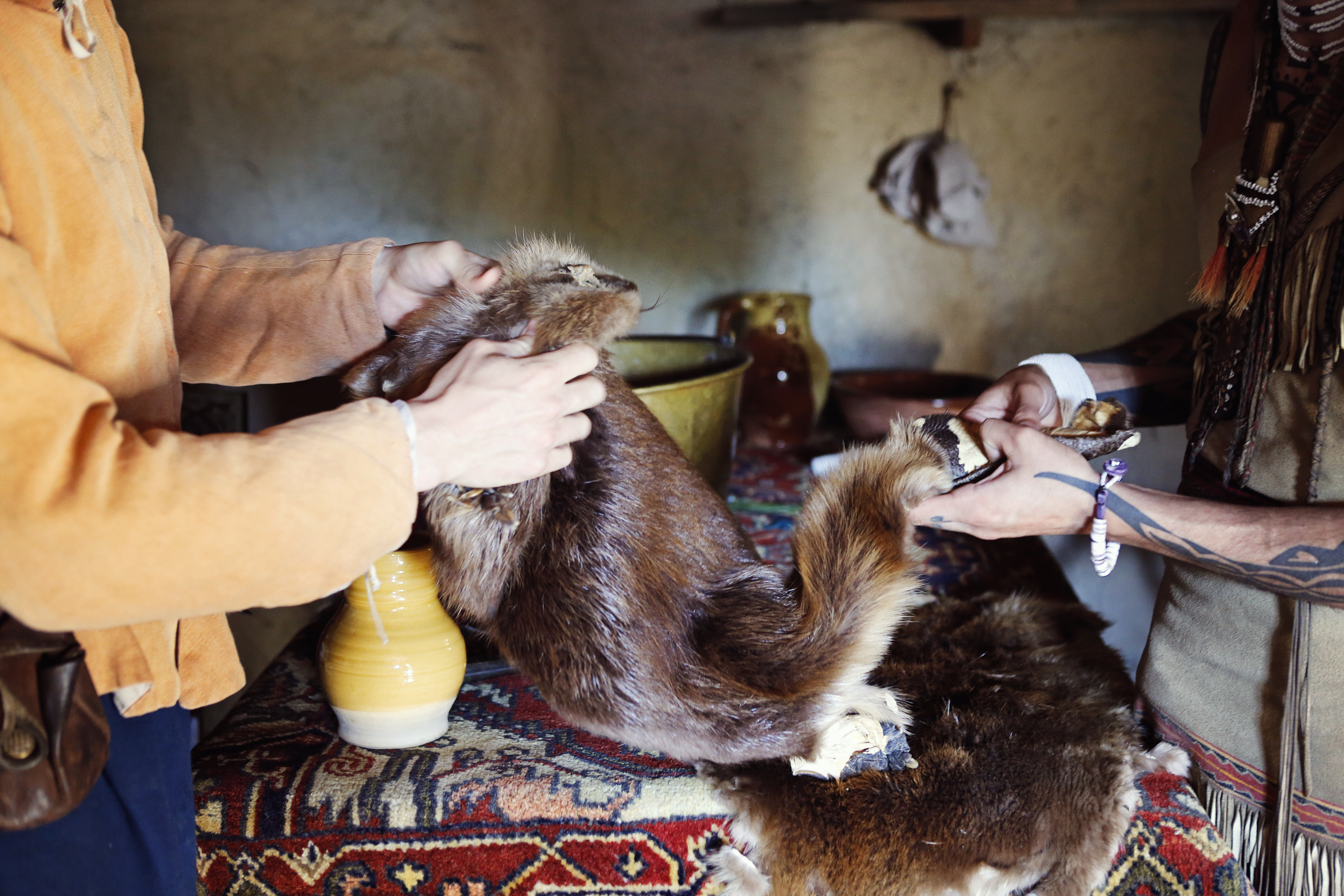Paleoindian Period (12,000-10,000 Years Ago)
The earliest existing material culture from humans in the American Northeast dates to what archaeologists call the Paleoindian Period, near the end of the Ice Age. By this time, the Ice Age glaciers had melted, but the environment was still cold and tundra-like. People were quite mobile and hunted, gathered, and foraged for food and resources in this harsh habitat. Spears were the main tool used for hunting, especially since animals at this time were large. The Wampanoag, who were mostly nomadic at this time, hunted species like caribou, but in other regions, Indigenous people hunted even larger species like mastodon, musk ox, and giant beaver. Besides spears, people made stone tools to help them with tasks such as scraping animal hides, sewing, woodworking, and butchering. Although the Eel River site has evidence of people regularly living in this area in later periods, only a handful of Paleoindian artifacts have been found here and all of them are stone spear points. Whether or not these artifacts represent a permanent settlement or a Wampanoag person passing through the area cannot be determined.
Middle-Late Archaic (7,000-3,000 Years Ago)
Archaeologists demarcate the Archaic Period by its warming climate and the growth of a temperate forest; this warmer climate provided a home for many new animal and plant species in the Northeast as well as access to resources that had once been covered by ice. Previously inaccessible local stone quarries, for example, could now be used for tools. The large mammals of the Paleoindian Period did not survive, but smaller species like deer, beaver, and turkey inhabited the new climate along with many new species of plants, animals, and fish. The Wampanoag moved seasonally to utilize these new species and to trade regionally for other materials. Because the glaciers had melted, the ocean and rivers were also more accessible. Many new types of tools were made to take advantage of the variety of resources with activities like chopping wood, drilling shells, building mishoon (canoes), and scraping hides. It is during this time that we have archaeological evidence of Wampanoag people beginning to use the Eel River site continuously.
Early-Middle Woodland (3,000-1,000 Years Ago)
The Early to Middle Woodland Period is characterized simultaneously by long-distance trade networks and the development of more densely populated areas as people occupied more permanent home settlements. Many groups, including the Wampanoag, amassed larger populations but still moved seasonally, returning to the same locations year after year to acquire resources. During this time, pottery, which had previously been manufactured in a very limited area, became widespread and replaced stone bowls while bows and arrows replaced spears, transforming both hunting and regional conflict.
Late Woodland (1,000 to 500 Years Ago)
Archaeologists set apart the Late Woodland Period by the development of maize (corn) farming and cultivation. Changes in the environment as well as different strains of maize plants acquired through trade enabled the Wampanoag to farm large quantities in a relatively quick growing season. The Wampanoag could now grow plants as well as hunt and gather food as part of their food production practices. Seasonal movement continued, with coastal groups making use of the ocean and waterways in warmer seasons and returning inland in the colder seasons. The Woodland Period ended with the arrival of European colonists.
Early Contact Period (500+ Years Ago)
The Contact Period begins approximately 500 years ago and is marked by the arrival of Europeans in the Northeast. The first Europeans were explorers and seasonal fishermen and they were followed by colonists (like the Pilgrims in 1620) who set up permanent homes and settlements in North America. When Europeans first arrived in the early 1500s, approximately 21,000-24,000 Wampanoag lived in areas of what is now present-day Massachusetts and Rhode Island. By the arrival of the Pilgrims in 1620, the Wampanoag population had been reduced by up to 90%, mostly due to a European-introduced plague that swept through the area in 1616-18. The arrival of Europeans initiated a disruption to all Indigenous life and led to many subsequent cultural changes. Interactions between Indigenous groups and Europeans introduced differences in material culture, such as foods, technology, and clothing; non-material culture, such as lifeways, religion, and language; biological interactions, such as new plant and plant and animal species; and devastating diseases.




